Universal started out by the name Independent Moving Pictures Company (IMP). Universal had only one horror film Dr. Jekyll & Mr. Hyde (1913).
A runaway success at the box-office, Hunchback of Notre Dame inspired Universal to produce their first true horror film, The Phantom of the Opera, based on the mystery novel by Gaston Leroux. The film was released in 1925. Chaney designed and endured torturous make-up that even exceeded the demands of his previous role as the Hunchback. And as with the film Hunchback, the sets played an important part in the film. The interior of the Opéra Garnier was recreated to scale, and remains one of the longest-standing film sets to this day.[citation needed] It was used for the 1943 remake with Claude Rains, as well as numerous other pictures. The set is contained on Stage 28 at Universal, which was constructed specifically for the film and dubbed "The Phantom Stage."
Chaney, who was a free-lance player at the time of Phantom of the Opera's production, signed a contract at Metro-Goldwyn-Mayer and could no longer produce character roles for Universal[citation needed]. His death in 1930 ended any possibility of his leaving MGM for another studio, and Universal turned their attentions to other actors such as German character actor Conrad Veidt, who had been a star in the 1920 German expressionist horror masterpiece, Das Cabinet des Dr. Caligari (The Cabinet of Dr. Caligari), and in 1928's The Man Who Laughs.
In spite of the Great Depression, executive Carl Laemmle Jr produced massive successes for the studio with Dracula (directed by Tod Browning) and Frankenstein (directed by James Whale), both in 1931.
The success of these two movies launched the careers of Béla Lugosi and Boris Karloff, and ushered in a whole new genre of American cinema. With Universal at the forefront, film makers would continue to build on their success with an entire series of monster movies. These films also provided steady work for a number of genre actors including Lionel Atwill, Dwight Frye, Edward Van Sloan, and John Carradine. Other regular talents involved were make-up artists Jack Pierce and Bud Westmore, and composers Hans J. Salter and Frank Skinner. Many of the horror genre's most well-known conventions—the creaking staircase, the cobwebs, the swirling mist and the mobs of peasants pursuing monsters with torches—originated from these films and those that followed.
The Mummy was produced in 1932, followed by a trilogy of films based on the tales of Edgar Allan Poe: Murders in the Rue Morgue (1932), The Black Cat (1934) and The Raven (1935), the latter two of which teamed up Lugosi with Karloff. The Invisible Man, released in 1933, was a phenomenal hit and would spawn several sequels. Of all the Universal monsters, the most successful and sequelized was undoubtedly the Frankenstein series, which continued with Bride of Frankenstein (1935). Dracula too had its share of sequels, beginning with Dracula's Daughter in 1936, although only Abbott and Costello Meet Frankenstein, the 1948 comedy that was the beginning of the end for the Universal monster cycle, would feature Dracula as played by original leading man Bela Lugosi.
1936 also marked the end of Universal's first run of horror films as the Laemmles were forced out of the studio after financial difficulties and a series of box office flops. The monster movies were dropped from the production schedule altogether and wouldn't re-emerge for another three years. In the meantime the original movies were re-released to surprising success, forcing the new executives to give the go-ahead to Son of Frankenstein (1939) starring Basil Rathbone. During the forties, the most successful of the new series of Universal Horror movies was The Wolf Man (1941), which also established Lon Chaney, Jr., as the new leading horror actor for the studio, following in his father's foot steps. In 1943, the "Phantom stage" was employed for a remake of Phantom of the Opera, this time starring Nelson Eddy and Susanna Foster in a film that was as much musical as horror. Claude Rains played the Phantom.
A runaway success at the box-office, Hunchback of Notre Dame inspired Universal to produce their first true horror film, The Phantom of the Opera, based on the mystery novel by Gaston Leroux. The film was released in 1925. Chaney designed and endured torturous make-up that even exceeded the demands of his previous role as the Hunchback. And as with the film Hunchback, the sets played an important part in the film. The interior of the Opéra Garnier was recreated to scale, and remains one of the longest-standing film sets to this day.[citation needed] It was used for the 1943 remake with Claude Rains, as well as numerous other pictures. The set is contained on Stage 28 at Universal, which was constructed specifically for the film and dubbed "The Phantom Stage."
Chaney, who was a free-lance player at the time of Phantom of the Opera's production, signed a contract at Metro-Goldwyn-Mayer and could no longer produce character roles for Universal[citation needed]. His death in 1930 ended any possibility of his leaving MGM for another studio, and Universal turned their attentions to other actors such as German character actor Conrad Veidt, who had been a star in the 1920 German expressionist horror masterpiece, Das Cabinet des Dr. Caligari (The Cabinet of Dr. Caligari), and in 1928's The Man Who Laughs.
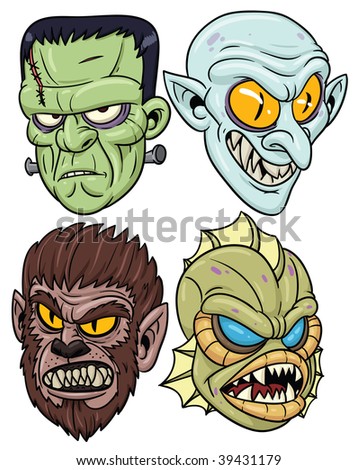 Classic Halloween monsters |  Halloween Monster Papercrafts |  zombies and any monster |  Of all the classic monsters in | 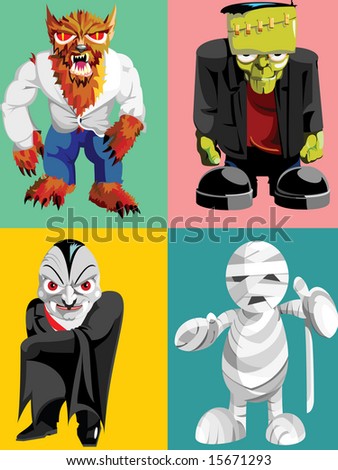 classic halloween monsters |
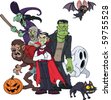 classic halloween creatures. |  Happy Halloween! | Classic Halloween Monsters | Classic Halloween Monsters |  Classic Halloween Party Theme Music (CD) ~ Halloween Party Monsters Cover |
The Mummy was produced in 1932, followed by a trilogy of films based on the tales of Edgar Allan Poe: Murders in the Rue Morgue (1932), The Black Cat (1934) and The Raven (1935), the latter two of which teamed up Lugosi with Karloff. The Invisible Man, released in 1933, was a phenomenal hit and would spawn several sequels. Of all the Universal monsters, the most successful and sequelized was undoubtedly the Frankenstein series, which continued with Bride of Frankenstein (1935). Dracula too had its share of sequels, beginning with Dracula's Daughter in 1936, although only Abbott and Costello Meet Frankenstein, the 1948 comedy that was the beginning of the end for the Universal monster cycle, would feature Dracula as played by original leading man Bela Lugosi.
 Halloween Monsters |  20101019-classic-halloween- |  Monster Bride Child White | 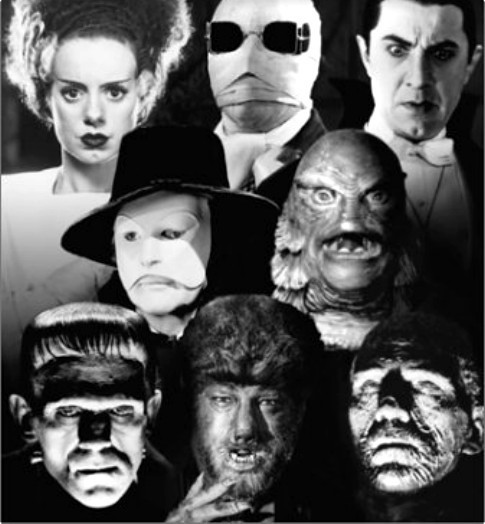 Classic Horor Movie Monsters |  with classic monsters |
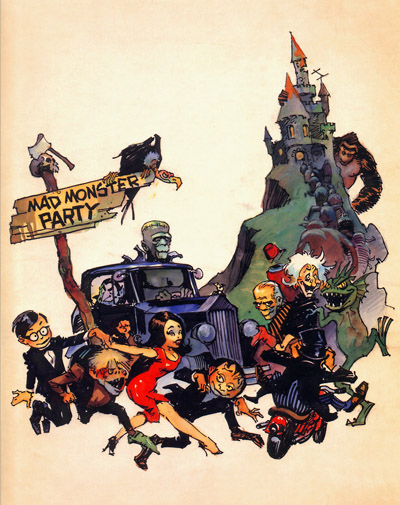 Classic Mad Monster Party | Robert at Classic Movie |  (Hackensack, NJ). Homemade | 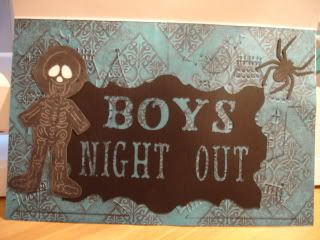 classic halloween monsters |  Classic Halloween Monsters. Card for my hubby for Halloween. |
No comments:
Post a Comment